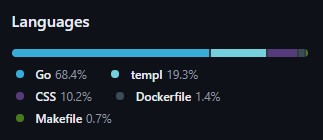#1757190021
[ mb_dev | golang ]
I recently updated the mb container image. It’s now just 4.91 MB (compressed), down from the previous 8.4 MB. This was possible by moving from an Alpine based container to a from scratch container. Go compiles to a static binary if you don’t need CGO, but I was using CGO because I needed some libc (musl/gnu). The next step was switching to a different SQLite driver, since that was my only C dependency.
There are several pure Go SQLite drivers, some are full rewrites in Go, while others are C code transpiled to Go. The solution I chose is ncruces/go-sqlite3, which compiles the entire SQLite project to WebAssembly and runs it in wazero, a zero dependency wasm runtime for Go. This way, we’re still running C code but without linking it, so no CGO.
I haven’t tested performance yet, but it seems fine so far. I’m planning to create a test suite using k6 for both functional and load testing.
There’s also some room for further size improvements. The default SQLite wasm binary includes all optional extensions, but I don’t need all of them (just math), so building a custom binary could shrink the image even more.
